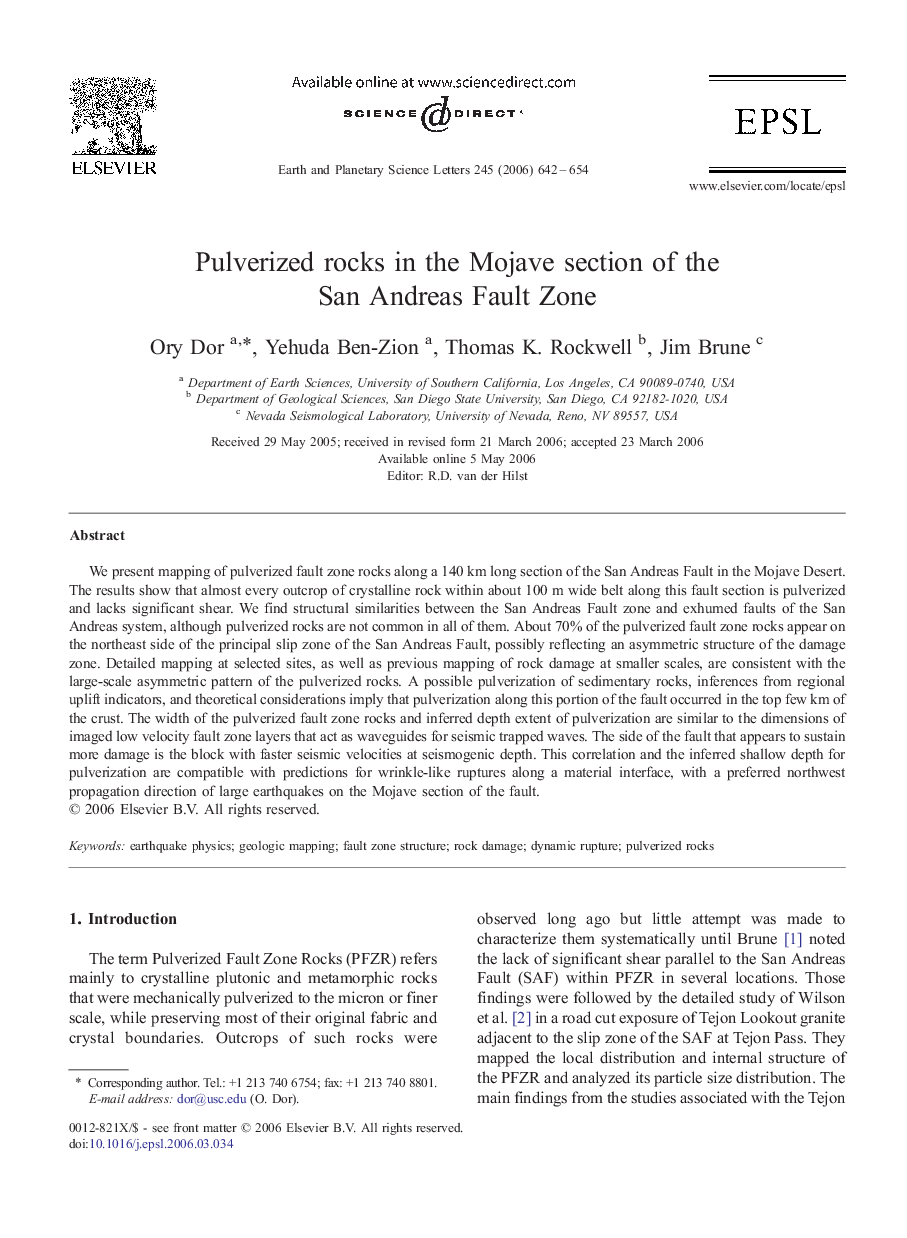| Article ID | Journal | Published Year | Pages | File Type |
|---|---|---|---|---|
| 6431159 | Earth and Planetary Science Letters | 2006 | 13 Pages |
We present mapping of pulverized fault zone rocks along a 140Â km long section of the San Andreas Fault in the Mojave Desert. The results show that almost every outcrop of crystalline rock within about 100Â m wide belt along this fault section is pulverized and lacks significant shear. We find structural similarities between the San Andreas Fault zone and exhumed faults of the San Andreas system, although pulverized rocks are not common in all of them. About 70% of the pulverized fault zone rocks appear on the northeast side of the principal slip zone of the San Andreas Fault, possibly reflecting an asymmetric structure of the damage zone. Detailed mapping at selected sites, as well as previous mapping of rock damage at smaller scales, are consistent with the large-scale asymmetric pattern of the pulverized rocks. A possible pulverization of sedimentary rocks, inferences from regional uplift indicators, and theoretical considerations imply that pulverization along this portion of the fault occurred in the top few km of the crust. The width of the pulverized fault zone rocks and inferred depth extent of pulverization are similar to the dimensions of imaged low velocity fault zone layers that act as waveguides for seismic trapped waves. The side of the fault that appears to sustain more damage is the block with faster seismic velocities at seismogenic depth. This correlation and the inferred shallow depth for pulverization are compatible with predictions for wrinkle-like ruptures along a material interface, with a preferred northwest propagation direction of large earthquakes on the Mojave section of the fault.
